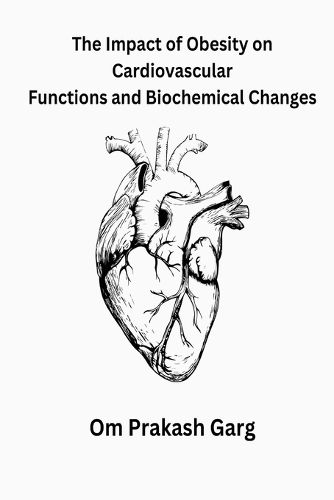Readings Newsletter
Become a Readings Member to make your shopping experience even easier.
Sign in or sign up for free!
You’re not far away from qualifying for FREE standard shipping within Australia
You’ve qualified for FREE standard shipping within Australia
The cart is loading…






This title is printed to order. This book may have been self-published. If so, we cannot guarantee the quality of the content. In the main most books will have gone through the editing process however some may not. We therefore suggest that you be aware of this before ordering this book. If in doubt check either the author or publisher’s details as we are unable to accept any returns unless they are faulty. Please contact us if you have any questions.
The word 'obese' originated from the Latin language "obesus" meaning "to grow fat
by eating" which is derived from the past participle of the verb 'obedere' (ob-away;
edere-to eat) " to eat away". Obesity, a body-weight disorder was generally defined as
an accumulation of fat beyond that considered normal, for a person's age, weight, sex
and body type. Over the years the definition of obesity has undergone several
changes. Initially, obesity was considered to be present when a subject was 30% or
more above his ideal weight (Silverstone, 1968) and later Wenar (1994) defined it
simplistically as excess body weight or more specifically as body weight greater than
20% of normal weight for height.1,2 Obesity as a pathologic condition, characterized
by an accumulation of fat much in excess of that is necessary for optimal body
functions.
$9.00 standard shipping within Australia
FREE standard shipping within Australia for orders over $100.00
Express & International shipping calculated at checkout
This title is printed to order. This book may have been self-published. If so, we cannot guarantee the quality of the content. In the main most books will have gone through the editing process however some may not. We therefore suggest that you be aware of this before ordering this book. If in doubt check either the author or publisher’s details as we are unable to accept any returns unless they are faulty. Please contact us if you have any questions.
The word 'obese' originated from the Latin language "obesus" meaning "to grow fat
by eating" which is derived from the past participle of the verb 'obedere' (ob-away;
edere-to eat) " to eat away". Obesity, a body-weight disorder was generally defined as
an accumulation of fat beyond that considered normal, for a person's age, weight, sex
and body type. Over the years the definition of obesity has undergone several
changes. Initially, obesity was considered to be present when a subject was 30% or
more above his ideal weight (Silverstone, 1968) and later Wenar (1994) defined it
simplistically as excess body weight or more specifically as body weight greater than
20% of normal weight for height.1,2 Obesity as a pathologic condition, characterized
by an accumulation of fat much in excess of that is necessary for optimal body
functions.